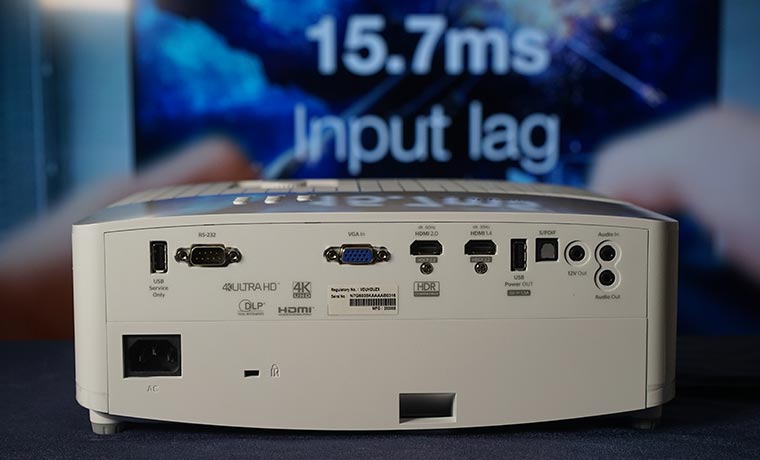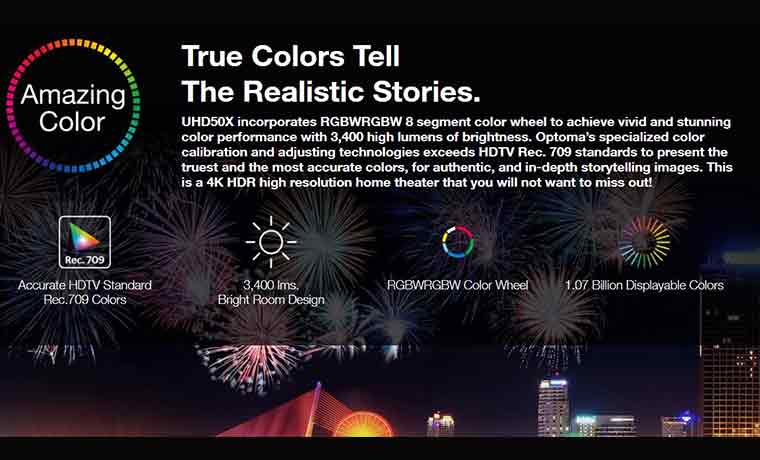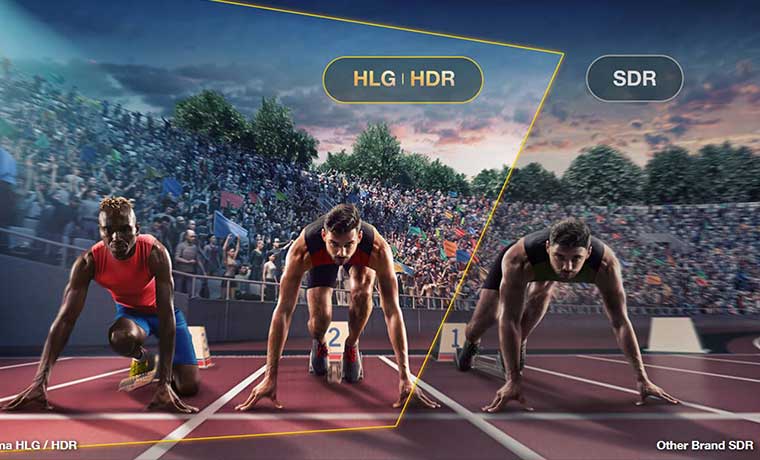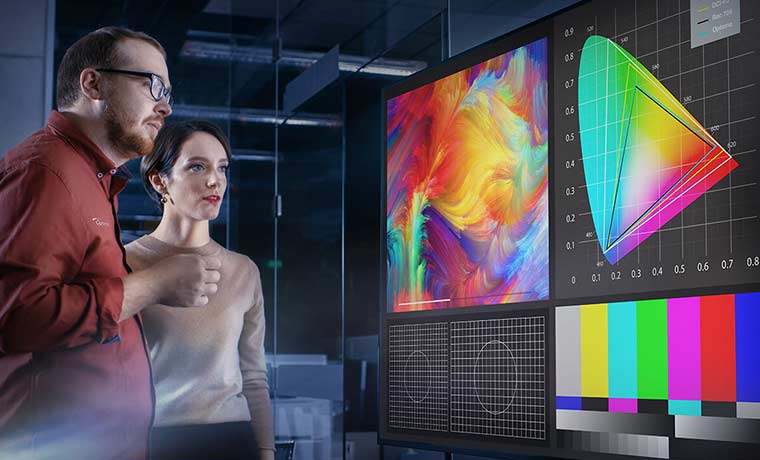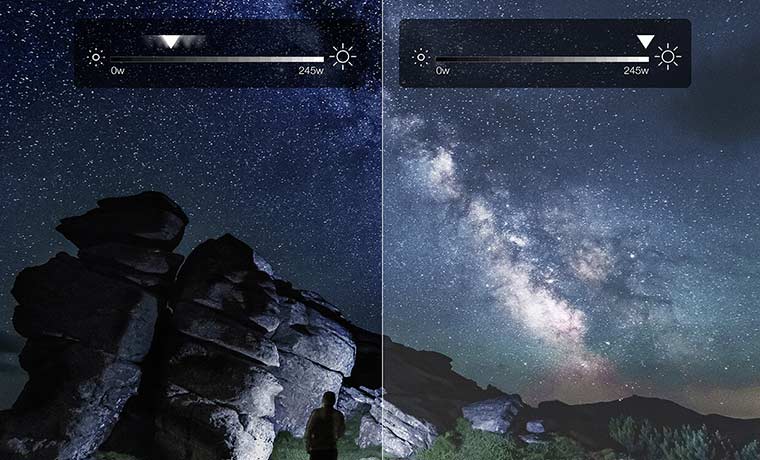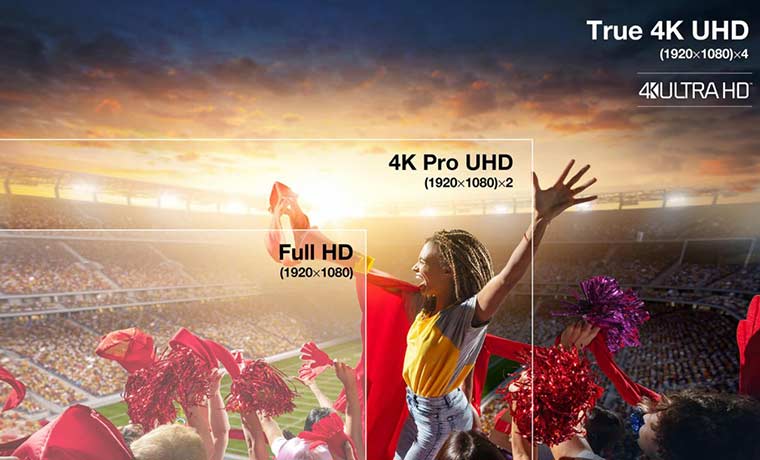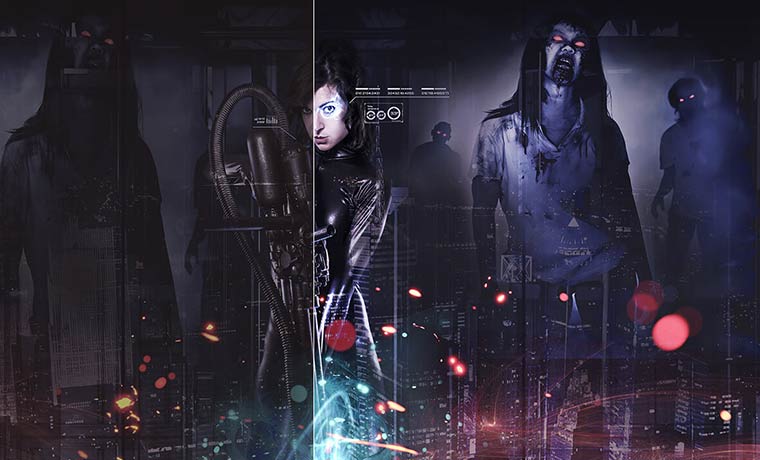UHD50X supports HDR10 and HLG. High Dynamic Range (HDR) is a standard designed to display a higher dynamic range in video signals, showing the image with more brightness and color without losing any details. Hybrid Log-Gamma (HLG) is an HDR system developed explicitly for live broadcast television by the BBC and Japanese broadcaster, NHK. Online video streaming platforms such as YouTube, Freeview Play, or DIRECTV all support HLG format. With this projector, you can enjoy TV programs like World Cup games or Blue Planet at home with stunning HDR effects.
When an HDR/HLG signal is detected, the projector automatically switches to HDR/HLG Display mode. Optoma’s HDR color mapping and tone mapping technology help optimize the projector to get the most out of HDR/HLG movies or games. In addition, the UHD50X allows users to adjust the HDR tone mapping according to the video content or environment.
HDR is really tough to do on a video projector because it’s not as noticeable as on a Liquid-Crystal Display (LCD) or an Organic Light-Emitting Diodes (OLED) display. LCD devices can do things like local dimming, making a huge difference when watching content presented in HDR. I’m not saying that HDR content looks terrible on the UHD50X. Quite the contrary, it looks excellent. The truth is, I wasn’t able to tell much of a difference between HDR content and Standard Dynamic Range (SDR) content at 4K. One of the pleasant surprises was that the UHD50X HDR Sim mode improved content in almost all cases, at least to my eye. The reality is that HDR is hard to do on a projector.

Typically Cinema mode is one of, if not, the best mode for color accuracy. That's not the case with the UHD50X. As you can see the colors are oversaturated.

Optoma's HDR-SIM mode is more color accurate as well as adding pleasant detail to this 4K HDR10 Disney movie.

This photo is captured in the projectors HDR mode. I did not notice an increase in color accuracy or detail. To my eye HDR-SIM did a better job.

Game mode is one of the better modes for color accuracy but curiously the image softens.

Reference did as good a job with color accuracy as HDR-SIM and Game modes but like the Game mode the image was noticeably softer to my eye.

Bright mode is what I expected although Optoma has managed to do a better job maintaining decent color and not losing everything to a bluish green cast.

User is where I would take the color down to -7 and slightly adjust the Gamma. This image is USER Mode out of the box.

Here is a scene from Star Wars Episode 7. I can't really see much of a difference between HDR on and SDR.

User mode provides you a good starting point where the image can look excellent with just a little tweaking.

I found Game modes color to be slightly higher with this content. The image still looked softer.

Again Cinema colors are oversaturated.

Ahh yes the blues and greens of bright mode. Loss of color is still a good trade off for being able to clearly see the image in a room with uncontrolled ambient light.

With Thor Ragnarök I finally could see a difference between HDR and SDR. I just didn't prefer it. Details are good but the image is flat to my eye.

Once again HDR-SIM looks better in my opinion.

Cinema mode does a better job with Thor than Mulan but what my camera did not capture is that the colors were more oversaturated then captured in this image.
❮
❯

